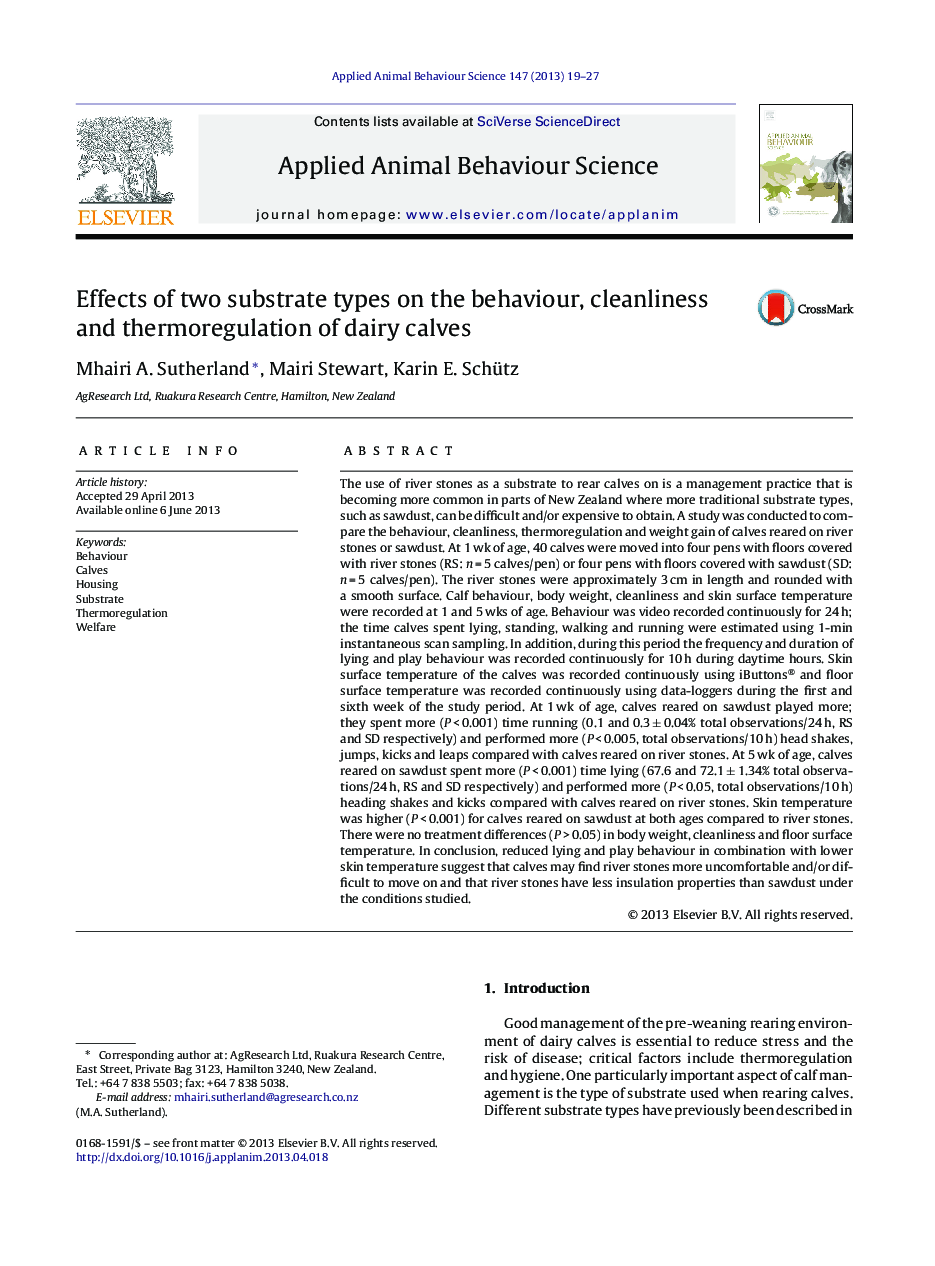| Article ID | Journal | Published Year | Pages | File Type |
|---|---|---|---|---|
| 4522728 | Applied Animal Behaviour Science | 2013 | 9 Pages |
The use of river stones as a substrate to rear calves on is a management practice that is becoming more common in parts of New Zealand where more traditional substrate types, such as sawdust, can be difficult and/or expensive to obtain. A study was conducted to compare the behaviour, cleanliness, thermoregulation and weight gain of calves reared on river stones or sawdust. At 1 wk of age, 40 calves were moved into four pens with floors covered with river stones (RS: n = 5 calves/pen) or four pens with floors covered with sawdust (SD: n = 5 calves/pen). The river stones were approximately 3 cm in length and rounded with a smooth surface. Calf behaviour, body weight, cleanliness and skin surface temperature were recorded at 1 and 5 wks of age. Behaviour was video recorded continuously for 24 h; the time calves spent lying, standing, walking and running were estimated using 1-min instantaneous scan sampling. In addition, during this period the frequency and duration of lying and play behaviour was recorded continuously for 10 h during daytime hours. Skin surface temperature of the calves was recorded continuously using iButtons® and floor surface temperature was recorded continuously using data-loggers during the first and sixth week of the study period. At 1 wk of age, calves reared on sawdust played more; they spent more (P < 0.001) time running (0.1 and 0.3 ± 0.04% total observations/24 h, RS and SD respectively) and performed more (P < 0.005, total observations/10 h) head shakes, jumps, kicks and leaps compared with calves reared on river stones. At 5 wk of age, calves reared on sawdust spent more (P < 0.001) time lying (67.6 and 72.1 ± 1.34% total observations/24 h, RS and SD respectively) and performed more (P < 0.05, total observations/10 h) heading shakes and kicks compared with calves reared on river stones. Skin temperature was higher (P < 0.001) for calves reared on sawdust at both ages compared to river stones. There were no treatment differences (P > 0.05) in body weight, cleanliness and floor surface temperature. In conclusion, reduced lying and play behaviour in combination with lower skin temperature suggest that calves may find river stones more uncomfortable and/or difficult to move on and that river stones have less insulation properties than sawdust under the conditions studied.
